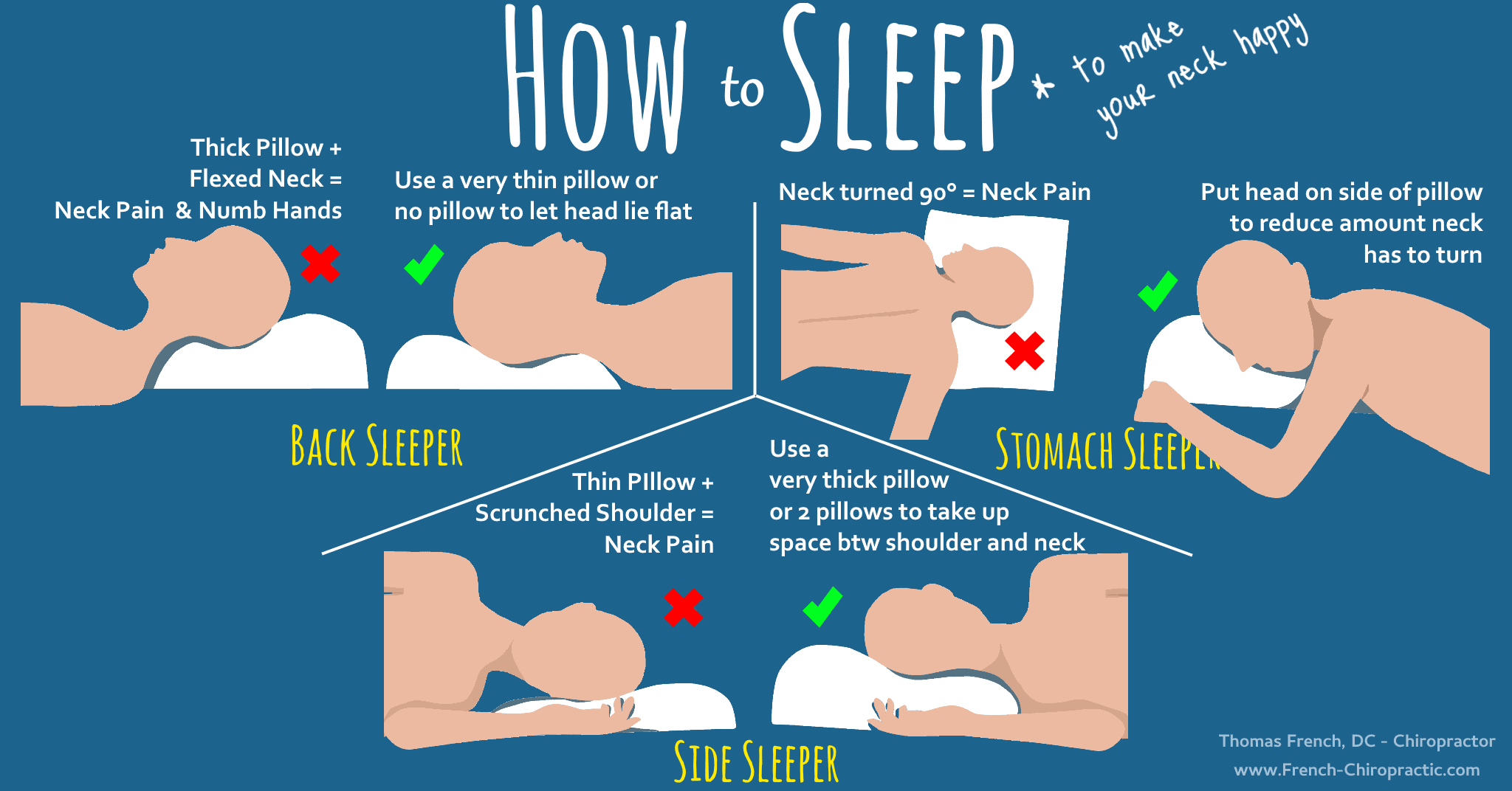Neck pain that feels worse in the morning is a common symptom that I hear about in my office. Since the pain starts right after you have been lying in bed, blame often goes to the pillow or the mattress. However, it is not always that simple. Below, I will give you some tips on how to figure out where your pain is coming from, and if your pillow is the problem, what you can do about it.
Why does your neck hurt in the morning?
Morning neck pain can be caused by something you are doing while you are sleeping. Think of things like a bad pillow for your sleeping posture, or an old mattress with a dip in the middle. When you fall into a hole every night in bed, your body is unable to easily adjust your positioning while you are asleep. That leaves you stuck in an awkward posture all night, and eight hours of having your neck bent at a funny angle causes joint stiffness and muscle pain in the morning. This concept also applies to sleeping on the couch, or having a pet take up half the bed.
The other reason for morning neck pain is chronic irritation in your neck muscles. Poor daytime posture can overwork the neck muscles, and cause inflammation. If it is not a severe amount of inflammation, you may not feel it at all during the day. That happens because the normal motion of your neck pumps out mild inflammation faster than it can build up and cause pain. However, once you stop moving at night, the slow build up of inflammation from the day can grow to the point that it wakes you up or hurts in the morning. This pain usually subsides after you start moving around or take a hot shower. It is a warning sign, though, that something is wrong, and can worsen and start to last longer.
Can you fix the problem with a new pillow?
You can find all kinds of claims from advertisers about special pillows designed to prevent neck pain. Some claim that the cervical spine needs to be supported, and put a bump where your neck goes. Others contain water or special fill that they claim are the secrets to a good night’s sleep. After trying many different pillows myself, and listening to my patients continue to complain of neck pain after paying more than $50 for some of these pillows, I did some research and came up with some recommendations for the best pillow position for every sleep position.
Side sleepers
Sleeping on your side is the most common position for people to sleep in. The problems associated with this position are: scrunching your shoulder or bending your neck, putting an arm under your head or pillow, and sacroiliac pain from the top leg pulling in a downward angle.
The Fix:
Use a thick pillow, or even two pillows, to take up the full space between your neck and your shoulder. This keeps your neck straight and your shoulders back. Having the right sized pillow should take away the need to put your arm underneath it for more support, and take away the numbness in your arms that can cause.
Side sleeping can also cause some trouble in the lower back, also. This is especially true for those with prior sacroiliac pain, wider hips or during pregnancy. A pillow between the knees can reduce the pull on the sacroiliac joint.
Back Sleepers
Sleeping face-up is the next most common position. This position is neutral for both your back and neck. However, problems can crop up if your neck stays bent forward all night.
The Fix:
Back sleepers need to use a very thin pillow or no pillow at all to keep the cervical spine straight. A thick pillow in this position causes the neck to flex forward, stretching neck muscles, pinching the nerves that go to the arms, and restricting your airflow.
Stomach Sleepers
The least common sleeping position has the most controversy surrounding it. Many consider this an undesirable position and recommend trying to change the habit. I disagree with trying to change your position, since I think your body is sleeping that way for a reason. However, accommodations need to be made to avoid having your neck at a ninety degree angle.
The Fix:
As I show in the picture above, position your pillow on the back of your head, so your face points down at a 45 degree angle. This keeps your nose out of the mattress allowing you to breathe, but lessens the angle of your neck, reducing strain on the ligaments and joints that can develop with prolonged extreme rotation.

